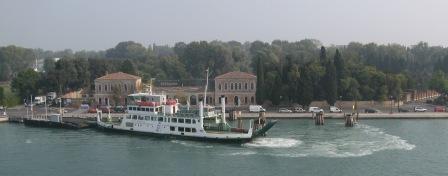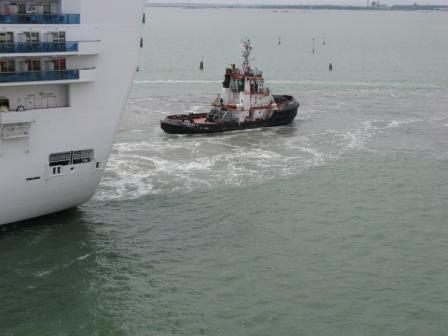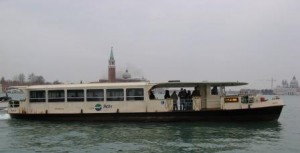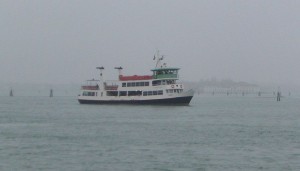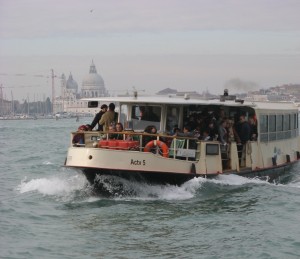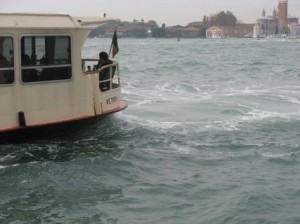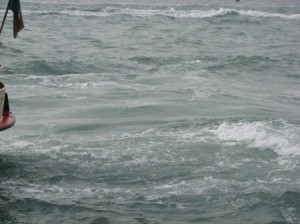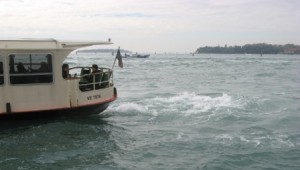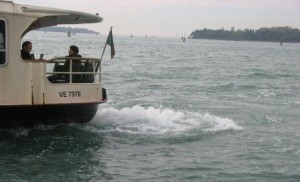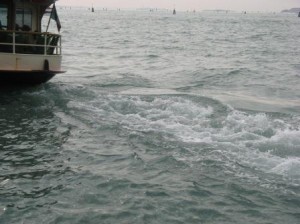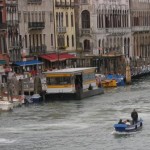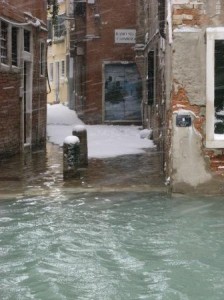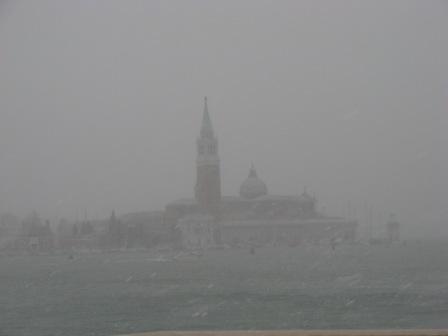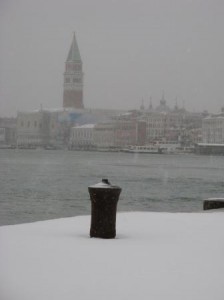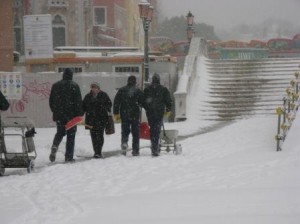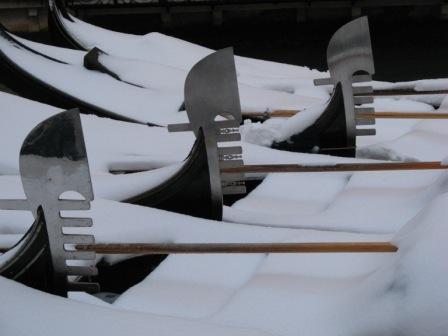While Americans are watching Punxsutawney Phil, February 2 here in Venice is still known as the feast of the Madonna Candelora (can-del-ORA). Or Candlemas, according to its very old English name, or the Feast of the Purification of the Blessed Virgin Mary in the medium-old locution, or the Feast of the Presentation of Jesus in the Temple today.
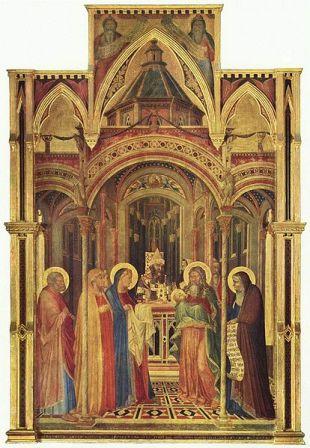
You’ll be startled to hear that it does not involve special food, songs, costumes, or any other acts or even thoughts, although down here at the waterline there may be some fragments of litany or dogma I haven’t come across. This general silence may be because Carnival has overwhelmed it, a festival famous for its lack of litany and dogma.
However, this baby step toward spring is still recognized in an old saying you hear around, which goes like this:
Ala Madona Candelora/de l’inverno semo fora/Se xe piove o xe vento/de l’inverno semo dentro.
“At the Madonna Candelora/ we’re out of winter/ But if it’s rainy or windy / we’re still inside it.”
No mention of how long the extended winter might be (one of Phil’s more helpful services, the six-more-weeks footnote). The canny Venetians may not have wanted to commit themselves. Or the Blessed Virgin.
I have discovered by other means, though, that the feast was mentioned in a document dated 380, and celebrated on February 14. Later modifications by popes and emperors brought it to February 2; Pope/Saint Gelasius (492-496) finally suppressed the ancient Roman festival of Lupercalia (also involving purification), and connected it to respect the calculation governing the Jewish ritual of a woman’s purification 40 days after giving birth (hence in the Christian calendar in the West it falls 40 days after Christmas).

Some (not all) scholars also assert that the feast was instituted to replace, smother, or otherwise push off the road the rites honoring the ancient Italic goddess Cerere (borrowed from the Greeks’ Demeter), goddess of growing things, particularly grain.
Speaking of Cerere, a few years ago I was researching an article on the myriad peoples, lumped together under the rubric “Italic,” which were doing just fine in Italy prior to the Roman domination (“Italy Before the Romans,” National Geographic, January, 2005). One of these peoples, the Samnites, occupied the territories in and around Campobasso, in Molise.
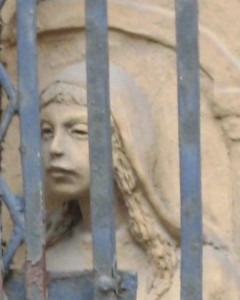
I came upon a fountain surmounted by a statue of Cerere in the square of Baranello, a small town of 2,745 souls six miles from Campobasso. It was clearly not ancient; in fact, it was created in 1896. Perhaps the harvest was a disaster that year — I’m just guessing. Then again, maybe they’d had a bumper crop and didn’t want to appear to take it for granted. I suspect that farmers tend to be belt-and-suspenders people.
The inscriptions on the statue’s pedestal (translated by me) state:
(Front) I dedicate this fountain in honor of the farmers of Baranello who with work and sobriety contributed to its well-being
(left) Almo Sun, who with your shining chariot makes the day rise and disappear and returns to be born, different but the same, may you contemplate something larger than this town. May the earth, fertile with fruit and flocks, give to Cerere a crown of wheat-ears and may the salubrious waters and the nimbus of Jove nourish the people
(Right) O Gods, grant honest customs to docile youth, to old age placidity, and to the Samnite people give wealth, progeny, and every glory

Back to our — with all due respect — meteorological Madonna. The forecast for February 2 is for brilliant sun all day. I’m ready.

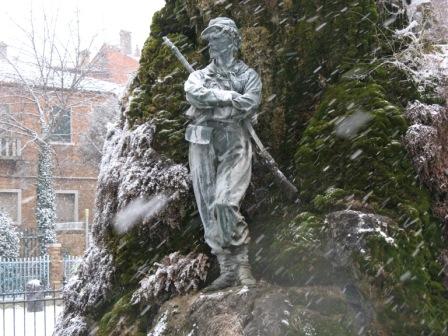
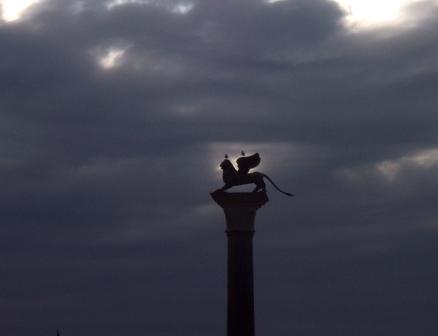 Nothing against gray. Gray can also be beautiful here, often more beautiful than blue.
Nothing against gray. Gray can also be beautiful here, often more beautiful than blue. Gray actually has a lot of points in its favor.
Gray actually has a lot of points in its favor.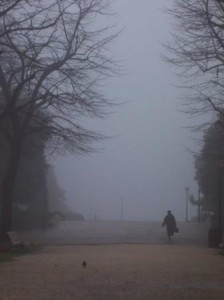 Unless you don’t like humidity, in which case gray is not your color.
Unless you don’t like humidity, in which case gray is not your color.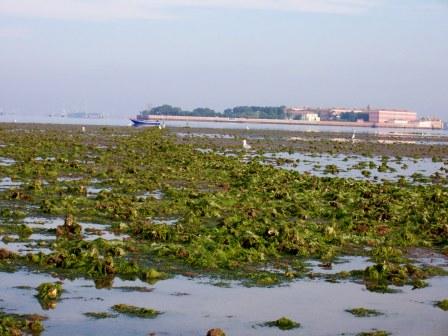 Oddly, this low tide happened at dawn in June a few years ago, rather than dusk in January. But you get the idea.
Oddly, this low tide happened at dawn in June a few years ago, rather than dusk in January. But you get the idea.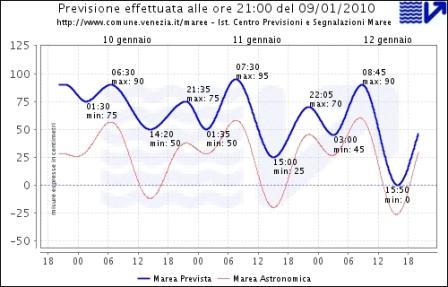 The lower line indicates the previously forecast high and low tide levels. The upper line traces what is really happening. Quite a difference. And this went on for days.
The lower line indicates the previously forecast high and low tide levels. The upper line traces what is really happening. Quite a difference. And this went on for days.